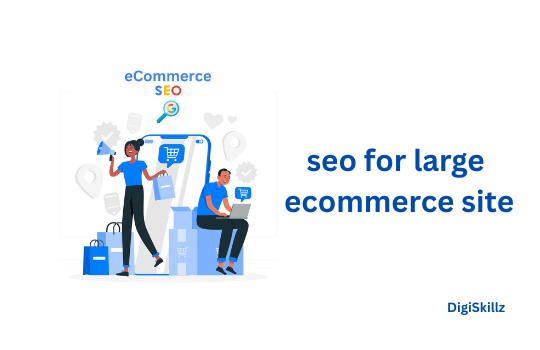
Navigating our site? Check out our SERP to find exactly what you need
Search engine result pages (SERP) have become the battlefield where businesses fight for visibility, and the stakes are high. In the current digital era, all businesses, regardless of size, must have an online presence. But having a website alone is insufficient. With millions of web pages on the internet, the challenge is to appear on the first page of the SERP because that’s where most users find what they are searching for. SERP optimization, therefore, is critical for digital success. By mastering key strategies, you can ensure that your business stands out in the crowded digital marketplace.
Table of Contents
Understanding SERP and Its Role in Online Visibility
SERP stands for Search Engine Results Page. Every time a user enters a query into a search engine like Google, Bing, or Yahoo, the SERP is the page that is generated, listing the relevant results in response to the search. The competition for appearing on the first page of these results is fierce, as most users rarely go beyond the first page. Search engines rank websites on SERP based on a number of factors such as relevance, user experience, content quality, and authority. Optimizing your website to rank higher on SERPs means crafting your digital presence in a way that aligns with search engine algorithms.
Achieving high visibility on the SERP increases your chances of being discovered by your target audience, which leads to more traffic, brand recognition, and potentially higher conversions. Yet, search engines do not reveal all their ranking secrets, so it takes a combination of various optimization techniques to succeed.
Crafting High-Quality Content that Speaks to Search Engines

Master the art of SERP optimization and watch your rankings soar!
The foundation of any successful SERP optimization strategy is content. Content is what users search for, and search engines aim to provide the best content for each search query. Creating high-quality content that resonates with your audience is essential, but it must also appeal to search engines. Search engines evaluate content based on its relevance to the user’s query, the depth of information provided, and its authority.
When crafting content, start by researching keywords. The words or phrases people type into search engines are known as keywords. Identifying the right keywords for your industry is crucial. You want to target keywords that are relevant to your business, but also ones that users are actively searching for. Incorporating these keywords naturally into your content without overstuffing is key to satisfying search engine algorithms. For example, if you run an online bookstore, your content should include keywords that focus on specific book genres, authors, or even book reviews. However, the most successful SERP optimization doesn’t just rely on primary keywords but also focuses on related terms that enhance the content’s relevance and breadth.
In addition, long-form content tends to rank better. Search engines favor content that offers comprehensive coverage of a topic. A blog post of 1,500 to 2,000 words, when properly structured, can often outshine shorter posts. The more information you provide, the more search engines see your site as a valuable resource for users. However, quality should never be sacrificed for quantity; poor-quality, keyword-stuffed content will get penalized. The focus should always be on providing clear, engaging, and informative content that solves user queries.
Leveraging On-Page SEO for Better SERP Performance
On-page SEO is another critical aspect of SERP optimization. It involves tweaking the content and structure of your website to improve its visibility on search engines. This process begins with optimizing meta tags—title tags and meta descriptions—which are some of the first things a user sees when your site appears on a SERP. The title tag must include your main keyword and be concise yet compelling, enticing the user to click on your link. Similarly, the meta description should be a brief, keyword-rich summary of what the user will find on the page, enhancing the likelihood of generating more clicks.
Next, the content itself should be optimized. Header tags, such as H1, H2, and H3, help break down your content into easily digestible sections, improving readability for both users and search engines. Incorporating your keywords into these headers ensures better crawlability by search engine bots, allowing them to understand the structure of your content. This is an important ranking factor.
Furthermore, internal linking—the practice of linking to other relevant pages within your website—plays a crucial role in SERP optimization. It helps search engines understand the relationship between different pages on your site and encourages visitors to explore more of your content. External links, or backlinks, also contribute to higher rankings. When reputable websites link back to your content, it boosts your domain authority, a key factor that search engines consider when ranking pages.
The Importance of User Experience in SERP Optimization

Understanding the importance of SERP: Your gateway to online visibility and success
User experience (UX) is now more vital than ever for SERP optimization. Search engines prioritize websites that provide a smooth, efficient, and enjoyable experience for users. Factors such as site speed, mobile-friendliness, and overall site navigation heavily influence search engine rankings.
Page loading speed is a direct ranking factor for search engines like Google. A slow-loading site frustrates users and increases the likelihood of them leaving your site without engaging with the content. To prevent this, ensure that your website is optimized for speed by compressing images, enabling browser caching, and minimizing the use of heavy scripts.
With the rise in mobile usage, having a mobile-friendly website is no longer optional. Due to the implementation of mobile-first indexing, search engines such as Google now index and rank material primarily based on its mobile form. If your site is not responsive or optimized for mobile, you risk losing visibility in the SERP, regardless of how good your content is. Therefore, a responsive design that adapts to different screen sizes ensures that users can easily interact with your site whether they are on a desktop or a smartphone.
Another key element of user experience is site navigation. A well-organized website with a clear hierarchy allows both users and search engines to easily navigate your pages. Ensure that your most important pages are accessible within a few clicks, and implement clear call-to-action buttons to guide users through your site. A cluttered, difficult-to-navigate website will not only turn users away but also diminish your chances of ranking higher on SERPs.
The Growing Role of Featured Snippets and Other SERP Features

Discover the power of featured snippets and SERP features: transforming searches into opportunities!
In recent years, the SERP landscape has evolved. Traditional blue links are now accompanied by various enhanced features like featured snippets, knowledge panels, and “People Also Ask” boxes. These features offer businesses additional opportunities to stand out, even if they are not ranked as the top result.
Featured snippets are short blocks of text that appear at the top of the SERP in response to specific queries. They are designed to provide a direct answer to the user’s question without them having to click through to a website. While this may seem counterproductive, appearing as a featured snippet can drive significant traffic to your site, as users tend to click on the source to learn more. To optimize for featured snippets, you need to provide clear and concise answers to common questions related to your industry.
Other SERP features like knowledge panels or rich snippets (which display additional information like ratings, pricing, or images) can enhance your visibility and click-through rate. Optimizing your content for these features may involve structured data markup, which helps search engines better understand the content of your page and display it in rich formats.
Keeping Up with Algorithm Updates and Trends
Search engine algorithms are constantly evolving, with major updates often shifting how websites are ranked. Staying on top of these changes is crucial for long-term SERP optimization. Google, for instance, regularly updates its algorithm to improve search results, often focusing on enhancing user experience, rewarding high-quality content, and reducing the visibility of spammy or low-quality websites.
It is essential to monitor industry news and changes in search engine behavior. Following SEO experts, attending webinars, and keeping an eye on ranking reports are valuable ways to stay updated. Additionally, using analytics tools like Google Search Console or SEMrush allows you to track your site’s performance and quickly identify potential drops in rankings after an algorithm update.
Adaptability is the name of the game when it comes to SERP optimization. What works today may not work tomorrow, and search engines are constantly refining their ranking mechanisms. By remaining flexible and adjusting your strategies as needed, you can maintain and improve your digital visibility over time.
Conclusion
SERP optimization plays a pivotal role in shaping a brand’s digital success. The ability to rank higher on search engine results pages is not just about gaining visibility; it’s about being present at the moment your audience is searching for solutions. By integrating high-quality, user-centric content with robust on-page SEO practices, businesses can position themselves as authoritative sources in their industries. Furthermore, enhancing user experience through fast loading times, mobile-friendly design, and seamless navigation makes your website more attractive to both users and search engines alike.
Another key to sustained SERP performance is adaptability. Search engine algorithms are dynamic, frequently shifting to improve user satisfaction and combat outdated SEO tactics. Staying abreast of these changes, using analytical tools, and adjusting strategies accordingly ensures long-term ranking stability. The integration of new SERP features like featured snippets or rich snippets also creates unique opportunities to further enhance online visibility.
Ultimately, appearing on the first page of SERP goes beyond increasing web traffic—it leads to deeper audience engagement, greater brand credibility, and higher conversion rates. Consistent SERP optimization efforts allow businesses to thrive in a competitive online landscape, ensuring that they not only reach their target audience but stay relevant in the minds of consumers. In a rapidly evolving digital world, mastering SERP optimization is not just an option but a necessity for those aiming to achieve and sustain digital success.
Author Name : Mohammed Shamil K
Leaner of Digiskillz,Digital Marketing Course in Kottakkal











Leave A Comment